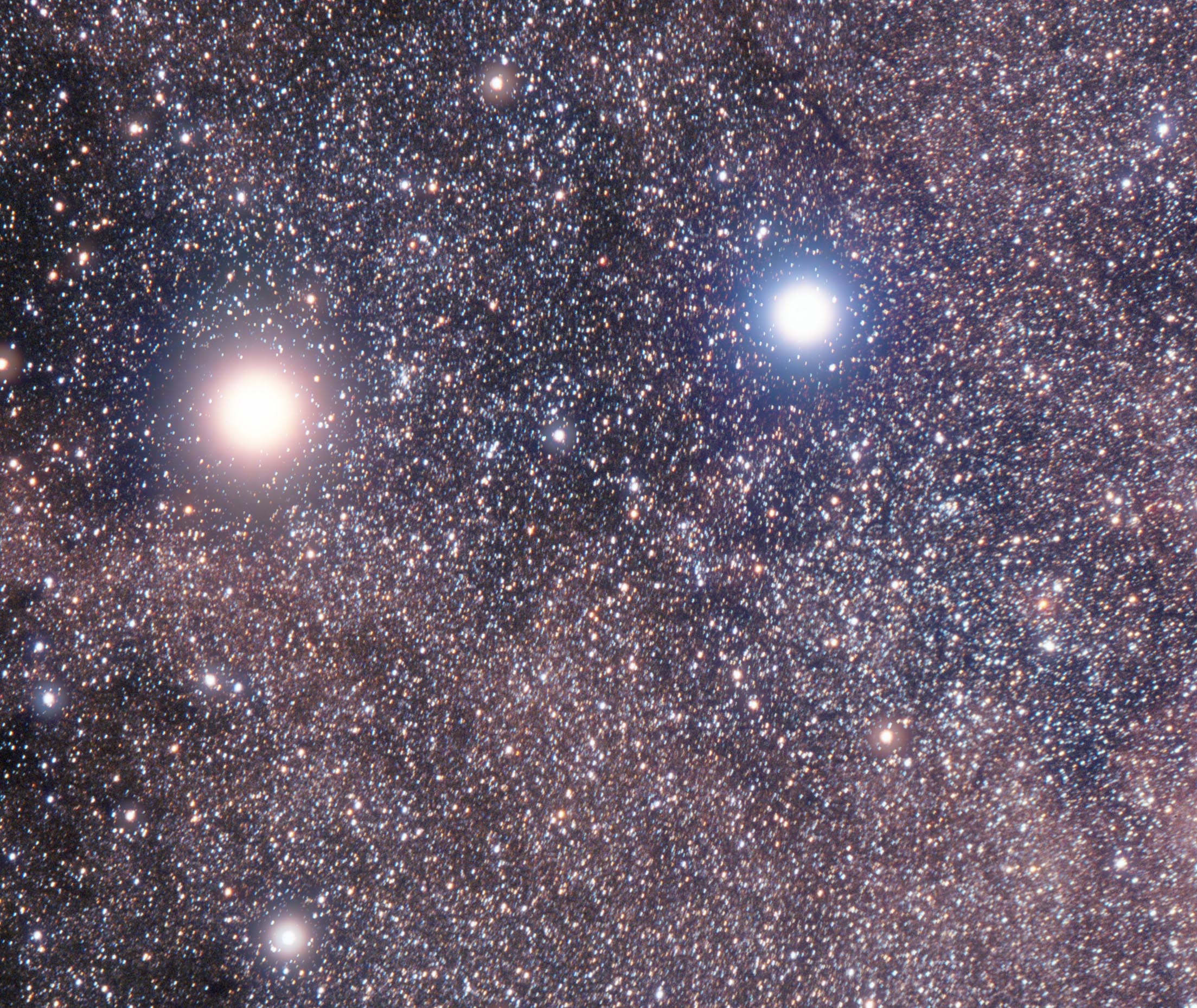







| BOOKS | F. A. Q. | ARTICLES | TALKS | ABOUT KEN | DONATE | BEYOND OUR KEN |
|---|
By Ken Croswell
Published on Astronomy.com (November 15, 2004).

Although little known to most stargazers in the northern hemisphere, Beta Centauri is the eleventh brightest star in the night. It's just 4.5 degrees west of Alpha Centauri, the Sun's nearest neighbor. Now astronomers have measured Beta Centauri's mass and distance.
Knowing a star's mass is crucial, because it dictates how fast a star evolves and how it dies. Beta Centauri's main star consists of two nearly identical blue giants that pulsate every few hours and orbit each other every 357 days. John Davis of the University of Sydney in Australia and his colleagues in Australia and Europe used interferometry and spectroscopy to establish that each blue giant has 9.1 solar masses.
 Comparing the true and apparent sizes of the orbit yielded Beta Centauri's distance: about 330 light-years, nearly 200 light-years less than the Hipparcos satellite determined. Hipparcos likely erred, say the scientists, because the blue giants' orbital motion marred the parallax it measured. A fainter star orbits the blue giants but probably didn't affect the Hipparcos parallax.
Comparing the true and apparent sizes of the orbit yielded Beta Centauri's distance: about 330 light-years, nearly 200 light-years less than the Hipparcos satellite determined. Hipparcos likely erred, say the scientists, because the blue giants' orbital motion marred the parallax it measured. A fainter star orbits the blue giants but probably didn't affect the Hipparcos parallax.
The new distance means Beta Centauri is about as far from Earth as Alpha, Beta, and Delta Crucis, the three bright blue stars in the Southern Cross. They're a few degrees west of Beta Centauri.
The astronomers will publish their work in Monthly Notices of the Royal Astronomical Society.
| BOOKS | F. A. Q. | ARTICLES | TALKS | ABOUT KEN | DONATE | BEYOND OUR KEN |
|---|